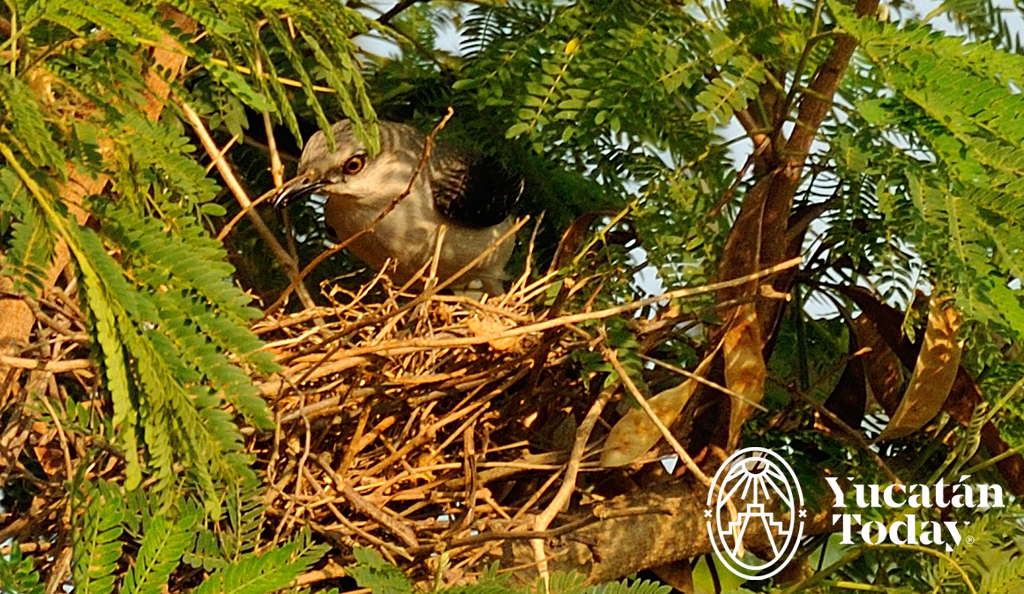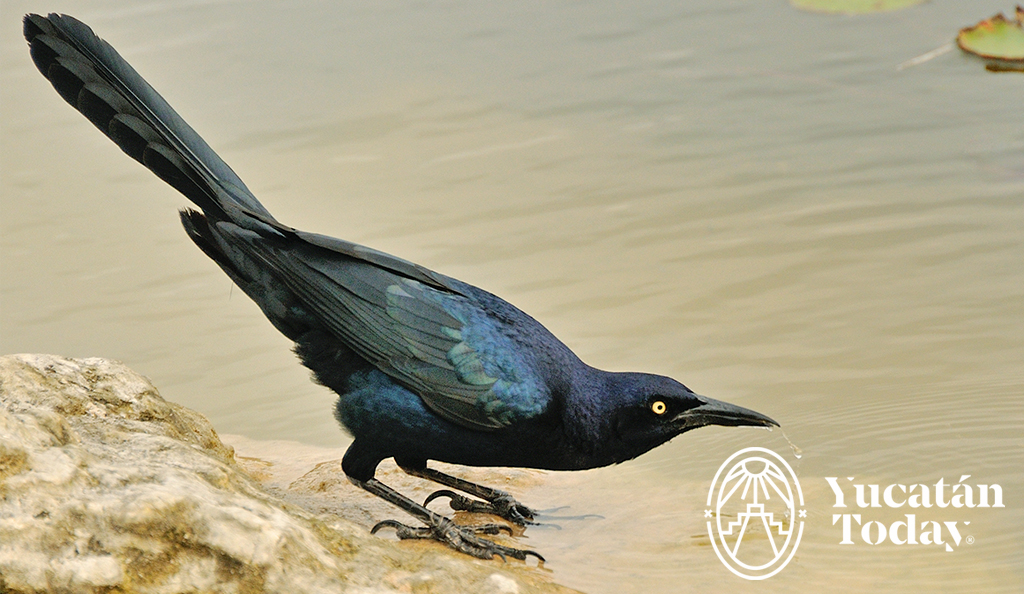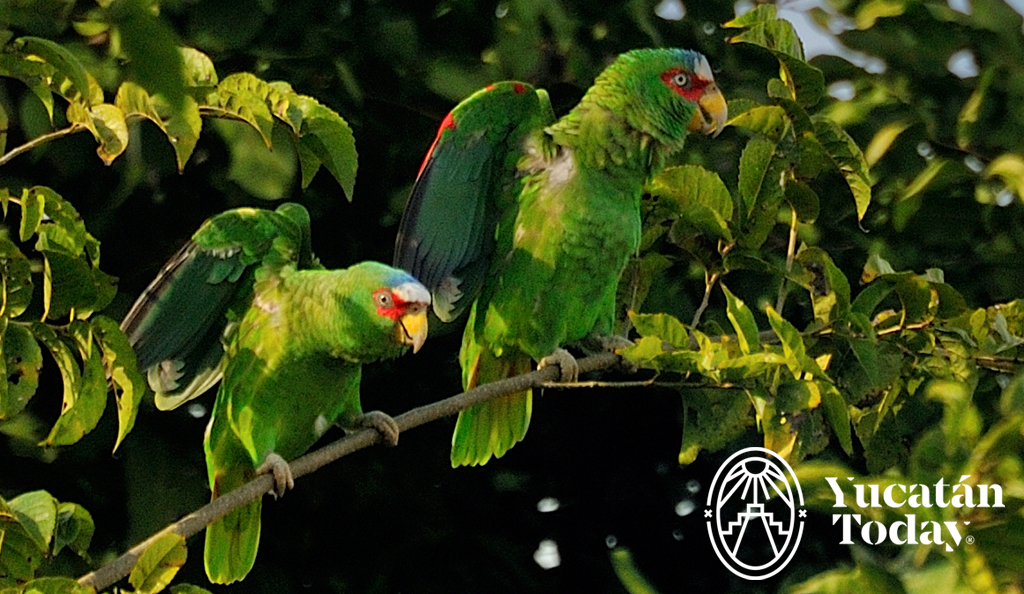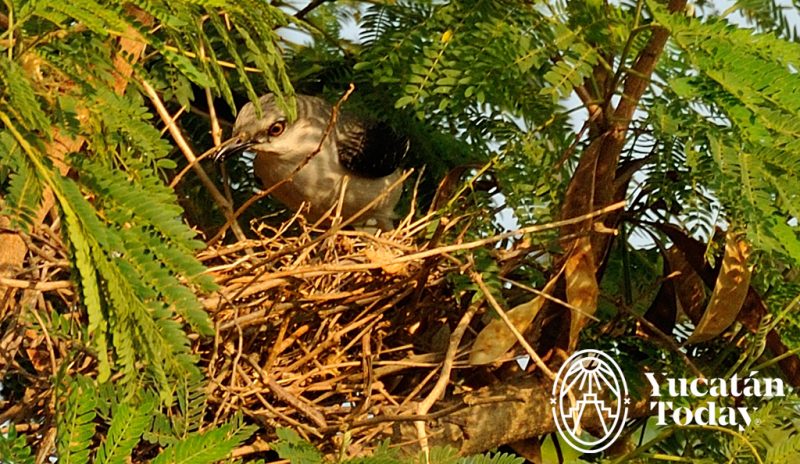
Cherie's Bird of the Month: Tropical Mockingbird
Tropical Mockingbird, Mimus gilvus, Cenzontle Tropical (Spanish), chika (Maya)
Is it a common trait when traveling to see something that reminds one of "home"? For me, when I saw the local mockingbirds perched on utility lines, rooftops, or trees in Mérida, I thought they were the same species as in the United States. I did the same thing here when I first saw the Great-tailed Grackles. They looked like Boat-tailed Grackles.
I learned this mockingbird species is the Tropical Mockingbird, not the common Northern Mockingbird of the US. Our Tropical Mockingbird lives in most of the Yucatán Peninsula, but not in any forests. Its range is from southern Mexico to Honduras and southeastern South America.
For several months, the Tropical Mockingbird songs in my Merida backyard are the first ones to welcome the dawn. In addition, this mimic mimes other bird songs from parrots to chickens as well as its own musical repertoire. "Mock" my word; this link is chock full of songs: http://macaulaylibrary.org/audio/103372 But the calls also loudly proclaim its territory, a necessary sound barrier to keep away others from its domain. Intruders are chased away.
Even dogs and cats are repeatedly dive-bombed. Once I saw a mockingbird that dove at a snake that chased a toad that quickly leapt across the ground. How unexpected to see one prey animal followed by a predator followed by a territorial bird! Since the Tropical Mockingbird breeds from March through December here, the songs also attract a mate. The twig nest can be easily seen from one to ten feet above the ground. This songster eats insects, arthropods, seeds, berries and frequently captures its prey on the ground. An occasional reptile may be eaten as well.
Sometimes I watch it open its wings in a slow, but jerky motion. One theory is that action may startle insects or predators. Why did I mistake the grayish and whitish Tropical Mockingbird from the grayish and whitish Northern Mockingbird? They display common behaviors, are each about the size of a television remote, and are similar in coloring.
However, one difference is the Tropical Mockingbird lacks the white wing patches of the Northern. Regardless, I'm pleased this song-full Tropical Mockingbird even lives in my backyard. Happy Listening! Nature's wonders inspire Cherie Pittillo, a wildlife photographer, zoologist, and author. Follow her friendly, feathered journey as she discovers the birds of the Yucatán Peninsula.
Read more about Yucatan Birds:

Author: Cherie Pittillo
Nature’s wonders inspire Cherie Pittillo, a nature photographer, zoologist, and author. Follow her friendly, feathered journey as she discovers the birds of the Yucatan Peninsula.
Receive the latest articles and much more from the best of Yucatán in your email!
Related articles

Tropical Flavors of Yucatán
I love to see how the markets, Fruterias, and supermarkets fill up with ripe fruit that look like a rainbow of tropical flavors.
Cherie’s Bird of the Month: Great-tailed Grackle
Quiscalus mexicanus, X-kau (Maya) When I escaped to my parents’ winter home in Florida during college breaks, I enjoyed the whistles, clacks and...




